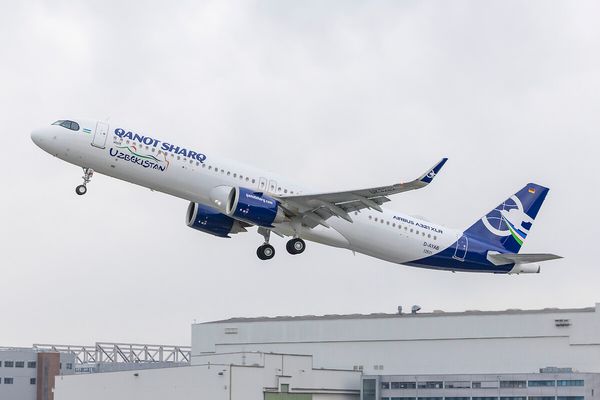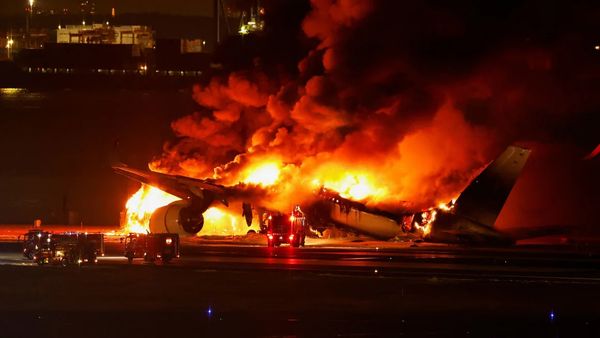As 2024 draws to a close, a sad reality has surfaced: this year has been the deadliest year for commercial aviation in six years, with fatalities exceeding 300.
Comparison to Previous Years
2018 was a year with various commercial aircraft incidents. A total of 557 people perished in commercial flight incidents that year.
This was the year of the Lion Air Flight 610 tragedy, a Boeing 737 MAX 8 that crashed into the Java Sea shortly after takeoff from Jakarta, Indonesia (CGK) for a domestic flight to Pangkal Pinang.
The Lion Air crash claimed the lives of all 189 people and, following the Ethiopian Airlines Flight 302 tragedy in 2019, caused a domino effect leading to a worldwide 737 MAX grounding, which further put Boeing into intense scrutiny that it has never really recovered from.
2024 saw 318 people perishing in commercial aircraft incidents. While not as deadly as 2018, this is the first time since then that commercial aircraft incident fatalities have exceeded 300.
This comes just after commercial flight fatalities hit a recent low of 120 in 2023, the year prior. That was the safest year in air travel since 2017 when only 58 deaths were recorded.
A Jump in Accidents
December saw two horrific accidents occur within just days of each other.
On December 25th, an Azerbaijan Airlines Embraer E190 (4K-AZ65) crashed near Aktau Airport in Kazakhstan after being reportedly damaged by an anti-aircraft missile.
The aircraft was flying from Baku (GYD) to Grozny Airport in Russia (GRV). As the plane entered Russian airspace, the crew reported losing GPS navigational aids possibly due to military jamming or spoofing. Soon after, the aircraft is believed to have been hit by a missile, which caused an explosion and sent shrapnel into the cabin.
The crew attempted to divert to Aktau but ultimately crashed short of the airport. Of the 67 occupants aboard the Embraer 190, 38 perished with 29 surviving.

Four days later, on December 29th, Jeju Air Flight 2216 crashed in Muan, South Korea (MWX). The aircraft, a Boeing 737-800 (HL8088), was coming in from Bangkok when the crew reported issues with the landing gear deploying after a possible bird strike.
The aircraft made two landing attempts, both without the gear deployed. It ultimately overran the runway on the second attempt and crashed into an embankment. Of the 181 occupants, two flight attendants were the only ones that survived.

Another accident from 2024 occurred on August 9th, involving Voepass Flight 2283. This aircraft, an ATR72-500 (PS-VPB), was en route on a domestic flight from Cascavel (CAC) to São Paulo Guarulhos (GRU), Brazil.
It has been reported that the turboprop was cruising at 17,000 feet when it experienced a sudden loss of altitude followed by a brief gain. Shortly after, the plane entered into a flat spin followed by a steep and terminal descent.
Following a preliminary investigation, it was found that the pilots suffered difficulties responding to a series of ice buildups on the aircraft. All 62 occupants perished in this incident.
In January, a Japan Airlines A350 caught fire after colliding with a Coast Guard aircraft in Tokyo, killing five.
Is Flying Still Safe?
It is a common response for people to associate the rise in incidents with all aviation, thereby concluding that flying is not safe.
This is false, as commercial aviation remains one of the safest forms of public transportation. Despite the series of deadly crashes, aircraft incidents as a whole remain extremely rare.

Such a statement is supported by various improvements in aircraft maintenance made possible by advancements in technology. Not only this, but international aviation regulators around the world have adopted more stringent policies, setting proper standards for aircraft maintenance among others.
Finally, airlines themselves have established proper training procedures to ensure their pilots and crews are fully ready to respond to any disturbances in the flight's operation.
Should Students Have Homework? Better After-School Balance » JetBlue Opens First-Ever ‘BlueHouse’ Lounge at JFK Terminal 5 » American Airlines Unveils 15 New Routes for 2026 Expansion »
Comments (3)
 Jack Poole
It seems the majority of these issues are outside of the USA
Jack Poole
It seems the majority of these issues are outside of the USA
 Michael Kennedy
It's not an "accident" when you get shot down.
Michael Kennedy
It's not an "accident" when you get shot down.
 Yet the headline indicates the exact opposite of Flying Still Safe. It may still be "safe" but clearly getting less so.
Yet the headline indicates the exact opposite of Flying Still Safe. It may still be "safe" but clearly getting less so.
Add Your Comment
SHARE
TAGS
NEWS Deadliest Year in Aviation2024 Plane CrashesJeju Air Jeju Crash South KoreaAzerbaijan Airlines Voepass 2024 Japan AirlinesRECENTLY PUBLISHED
 Should Students Have Homework? Better After-School Balance
Is homework bad for students? Explore learning benefits, stress, sleep, and smarter workload limits, so after-school time stays balanced.
STORIES
READ MORE »
Should Students Have Homework? Better After-School Balance
Is homework bad for students? Explore learning benefits, stress, sleep, and smarter workload limits, so after-school time stays balanced.
STORIES
READ MORE »
 Air Canada Rouge to Launch Boeing 737 MAX 8 Operations
Air Canada has officially confirmed a strategic shift for its leisure subsidiary, Air Canada Rouge, announcing that Boeing 737-8 (MAX 8) operations are slated to begin in late Q1 2026. The move marks the beginning of an ambitious year-long transition that will see Rouge evolve into an all-Boeing 737 operator.
ROUTES
READ MORE »
Air Canada Rouge to Launch Boeing 737 MAX 8 Operations
Air Canada has officially confirmed a strategic shift for its leisure subsidiary, Air Canada Rouge, announcing that Boeing 737-8 (MAX 8) operations are slated to begin in late Q1 2026. The move marks the beginning of an ambitious year-long transition that will see Rouge evolve into an all-Boeing 737 operator.
ROUTES
READ MORE »
 Qanot Sharq Takes Delivery of First Airbus A321XLR to Transform Central Asian Long Haul Travel
Uzbekistan’s premier private carrier, Qanot Sharq, has officially taken delivery of its first Airbus A321XLR. The delivery, which took place today at the Airbus facility in Hamburg, makes Qanot Sharq the launch operator for the ultra-long-range narrow-body in the Commonwealth of Independent States (CIS) and Central Asia.
ROUTES
READ MORE »
Qanot Sharq Takes Delivery of First Airbus A321XLR to Transform Central Asian Long Haul Travel
Uzbekistan’s premier private carrier, Qanot Sharq, has officially taken delivery of its first Airbus A321XLR. The delivery, which took place today at the Airbus facility in Hamburg, makes Qanot Sharq the launch operator for the ultra-long-range narrow-body in the Commonwealth of Independent States (CIS) and Central Asia.
ROUTES
READ MORE »



